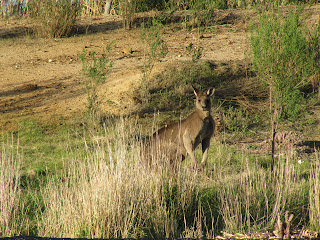Taxonomy is the science of defining groups of biological
organisms. Suffice to say it is not the most glamourous of biological research
areas. Marine biologists and penguinologists (that’s a real job) look down with
disdain on the humble taxonomist. And yet they could just be the one biologist
that actually saves the lives of humans, rather than just saving those fluffy
penguins.
 |
| Science has shown us that penguins are useless bastards Credit: Hannes Grobe/AWI |
The basis of my claim stems from one of the most pernicious
myths in all of biology – that a daddy long legs has the most deadly venom of
all spiders, although its fangs are too short to be deadly.
This is bunkum. Total nonsense. Bad science at its worst.
And yet it persists in part because of poor taxonomy.
You see for many of you, a ‘daddy long legs’ is in fact
nothing more sinister than a crane fly. Identified more accurately by
taxonomists as one of the 15,000 or so species of large, two winged flies that
make up the order Tipulidae. These large, ungainly and awkward insects are
harmless to the point that not only do they not bite humans, some do not bite
anything - as adults some do not eat. At all.
 |
| Crane flies - bad at flying, bad at biting Credit: Thomas Shahan |
But you may be sitting there thinking, “that’s not a
daddy long legs!” Many people will call arachnids in the order Opiliones ‘daddy
long legs’. These arachnids are not spiders, and nor are they scorpions, mites
or solifuges (camel spiders to you and me). They are an arachnid commonly referred
to in English as harvestmen – with 8 long legs and a simple oval shaped body.
All harvestmen lack venom, and so just like crane flies, are entirely harmless
to humans.
 |
| C'mon, this one's pretty cute, no? Credit: Harold Hoyer |
There is yet another subsection of you that still disagree
with my two current descriptions of a daddy long legs. There is a Family of spiders (not like a
mummy spider and a daddy spider, a whole range of similar species of spiders)
called Pholcidae. The most common of these in the UK is a critter called
Pholcus phalangiodes, and this is also called a daddy long legs. They're the ones you find a lot in houses that freak out if you disturb them. This is a predator evasion technique called 'whirling'.
Being a spider,
it does have venom, but this doesn't mean that they’re going to kill you. In
fact in the incredibly rare occasion that they do bite a person, it causes
nothing more than some short-lived localised burning. If you don’t like spiders
then these are the one type of spider that you should encourage because part of
their diet is in fact other spiders – their long spindly legs help prevent them
from getting bitten by their prey. And before you say that a spider that eats
other spiders is weird, it’s no different to you eating a monkey. Or perhaps a
slow loris.
 |
| The slow loris - an excellent source of protein Credit: Jellrancher |
But how does any of this save your life? Well by knowing
what these creatures are, you now know how harmless they are, and you are
unlikely to freak out next time you see a ‘daddy long legs’. Should you be
doing something like driving a car, this will undoubtedly be beneficial to you,
unlike Lucille Ellis, the Cornwall resident who crashed her car and injured another motorist after being spooked by a spider. So knowing what harmless
invertebrates are may just save your life one day and it will certainly do you
more good than knowing about penguins.
Even better, all of this excellent information can be summarised in the form of a Venn diagram:








































































